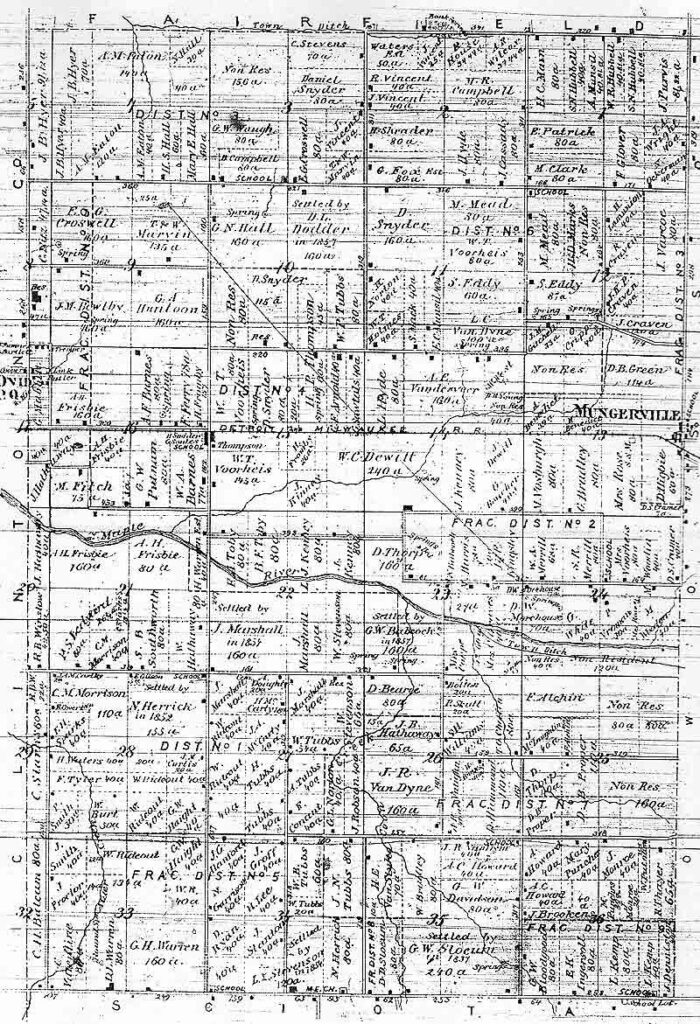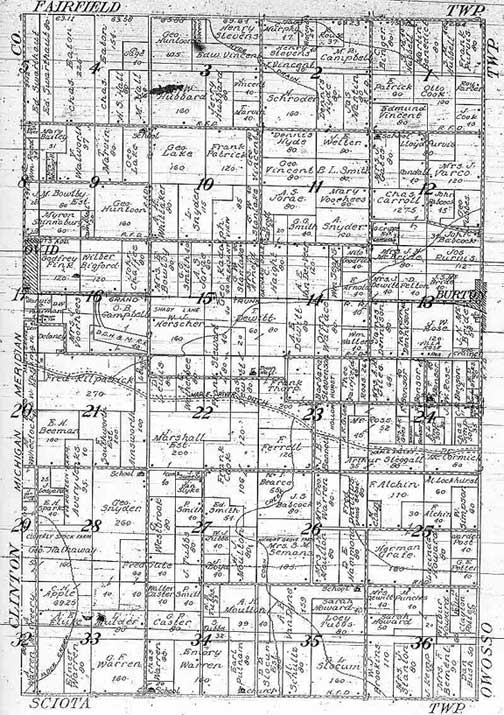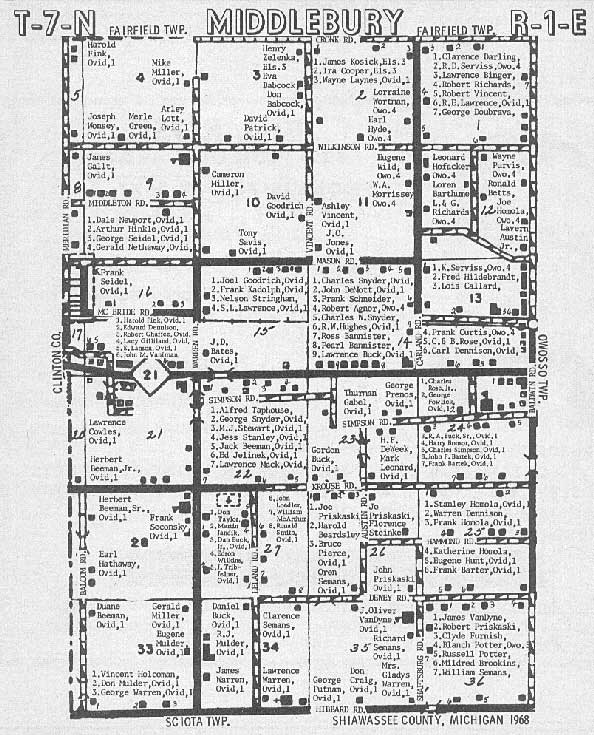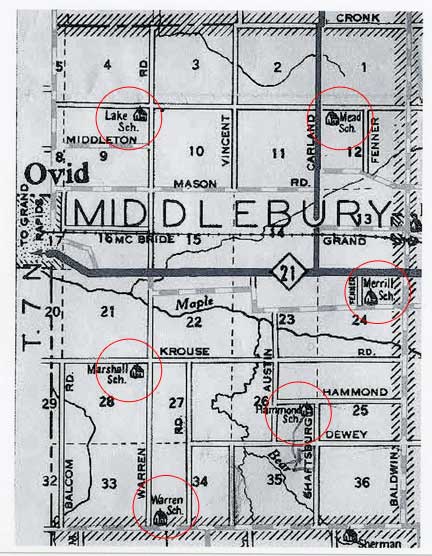Middlebury Township History
Middlebury Township receives it’s name from John and William Palmer, who came here in 1838 from their native Middlebury, N.Y. which their father had named after his native Middlebury, Vt.
The first election was held in the home of Moses Clark Jr. in 1839. The officials elected were; William Palmer, supervisor; Moses Clark, clerk; John Slocum, treasurer; Wm. Palmer, John Palmer and Elijah Potter, assessors; Wm. Palmer, John Palmer and Moses Clark Jr., school inspectors; John Slocum, Moses Clark Jr, and John Palmer, highway commissioners; John Slocum, Elijah Potter and Moses Clark Jr., justices of the peace; John Palmer, overseer of the road, District No. 1.
Early settlers included Obed Hathaway, with his wife and four children. They stayed with Henry Leach of Sciota Township until their own cabin could be built. In 1837 George Slocum brought his family to the Leach home and stayed until their cabin was built in section 35 of Middlebury.
The village of Middlebury changed its name to Middleburgh when George Slocum became its first postmaster on July 13, 1848 (there was another Middlebury post office in Michigan at that time). The office closed on Sept. 25, 1862. On August 5, 1852, a postoffice was opened on the farm of Ira Stinson under the name of Hale. Mr. Stinson was the first postmaster. It was renamed Maple Valley on Dec. 11, 1855. and operated until Oct. 18, 1860. The office was later moved to the farm of Horton Warren when he became the postmaster. It closed on Oct. 18, 1860. Kenney’s was located in Middlebury Twp. and was named for James Kenney who became the first postmaster here on Jan. 6, 1851.
While later in the history of the township, it should be known that during World War II, a prisoner of war camp was located in the township. A racetrack, Owosso Raceway, located at Carland Rd and M-21, was used to house German prisoners who had been brought to the United States. The camp was known as Camp Owosso.
The U.S. Government, during WWII setup a Prisoner of War Camp at the corner of M-21 and Carland Rd. The area was used as a dirt race track, but since it was not used during the war, it served as Camp Owosso. In the picture below, on the far left and right can be seen some of the tents-housing, while in the front are two military police. The tents had a cement floor and a kitchen was built, as well as showers and toilets. On May 30, 1944, 200 prisoners were brought in and by July there was a total of 375 in the Camp. The Owosso Military Police Unit supplied 30 policemen, cooks and drivers.

The prisoners had been captured on the battlefields of Europe and Africa and after being brought to Owosso, were allowed to work on area farms, the Roach Canning Factory at Owosso or the Aunt Janes Pickle Factory on Easton Rd. near New Lothrop.
Under the Emergency Farm Administration Labor Program, most prisoners chose to work and get paid, over staying confined in camp. Remember that most of our young men were overseas, engaged in the war. The prisoners preferred working at the farms, as they given extra food and there had to be one guard for every 3 prisoners. They earned about 80 cents a day.
The first prioners were typical Nazis, but the later ones of 1945 had a different attitude. They preferred farm work if they had a chance. At the Canning Factory, corn, peas and tomatoes were canned there and the prisoners were transferred by truck to and from the plant each day. As they rode through town, they would sing and holler and wave to anyone they saw. They apparently enjoyed being prisoners, far from the slaughter of the battlefields overseas. In the winter months, they were taken to Camp Custer, which had permanent housing.
One incident that drew national attention to Shiawassee County was the esape of two prisoners. They managed to slip out of the canning factory plant and made their way to Monroe St. where two women were waiting for them in a car and whisked away. When they were found to be missing, the County Sheriff, Ray Gellatly, notified the State Police and a massive manhunt was underway. The next morning , all four were captured near Colby Lake in a ‘thicket’, looking very bedraggled. The Germans were returned to the camp and the two women were prosecuted in federal court and served time in federal prison.
After the war ended, the camp was taken down and some of the small buildings were sold to neighbors. The Owosso Speedway opened again to race fans and all that remains of Camp Owosso is a small sign and few old photographs.



